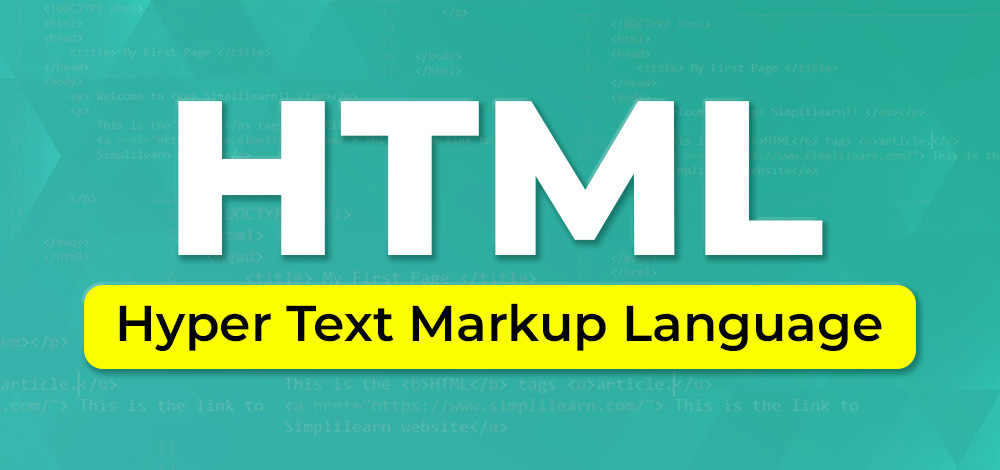HTML Full Form
Last Updated :
31 Jan, 2024
The full form of HTML is Hypertext Markup Language. It is a standard markup language used to design the documents displayed in the browsers as a web page. In simple, HTML describes the structure of a Web page and consists of a series of elements. It also tells the browser how to display the content.
This language can become more interactive and attractive by using CSS ( Cascading Style Sheet) and JS (JavaScript) within it. Now each point in HTML full form can be described as:
- Hypertext comes from the Hyperlink which means connections between the pages.
- Markup means the defined elements will be the page layout and elements within the page.
- Language combines both features and makes it Hypertext Markup Language.

Initially, HTML was released in 1993 and developed by Tim Berners-Lee in 1990. Currently, the Web Hypertext Application Technology Working Group (WHATWG) community is working on the HTML development. The current HTML5 version has gained so much popularity because of its newly added features in it. All the website’s skeleton is made of HTML and each browser performs on that and makes that visible and user-friendly to the user.
HTML Version Release Year

HTML Structure
The HTML structure contains the minimum number of HTML tags to run the HTML code onm browser. The structure of HTML document are given below:
HTML
<!DOCTYPE html>
<html>
<head>
<title>
</title>
</head>
<body>
</body>
</html>
|
Characteristics of HTML
- Easy to understand: It is the most straightforward language you can say, very easy to grasp this language and easy to develop.
- Flexibility: This language is so much flexible that you can create whatever you want, a flexible way to design web pages along with the text.
- Linkable: You can make linkable text like users can connect from one page to another page or website through these characteristics.
- Limitless features: You can add videos, GIFs, pictures, or sound anything you want that will make the website more attractive and understandable.
- Support: You can use this language to display the documents on any platform like Windows, Linux, or Mac.
- Not a Programming Language: HTML is not a programming language as it is only concerned with presenting the information on the web. It is not used to program any logic but to give structure and semantically meaning to our website. Though we can link JavaScript code to it which is a programming language.
- Language Support: HTML can support various other languages like JavaScript, Ruby, PHP, Perl, and many more. You can also able to run embed python during the runtime.
Advantages of HTML
- HTML is easy to learn, easy to apply and it’s totally free you will just need a text editor and a browser.
- HTML is supported by all the browsers and it is the most friendly search engine.
- HTML can easily integrate with other languages and is easy to develop.
- It is the basic of all programming languages and the lightest language ever.
- In HTML, the display changes frequently depending on the window size or the device size making it comfortable to read by the user.
Disadvantages of HTML
- HTML can be used to create only static Web-page, it can not create dynamic web-page.
- There is a lack of security in HTML.
- Creating a simple Web-page required so many tags.
- HTML language is not centralised i.e. all the web pages that are connected, you have to design them separately else need to use CSS.
- HTML becomes complex when you try to create a huge website.
Like Article
Suggest improvement
Share your thoughts in the comments
Please Login to comment...